Medicinal Herb Book
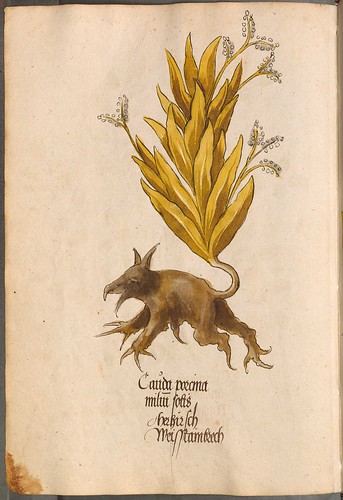

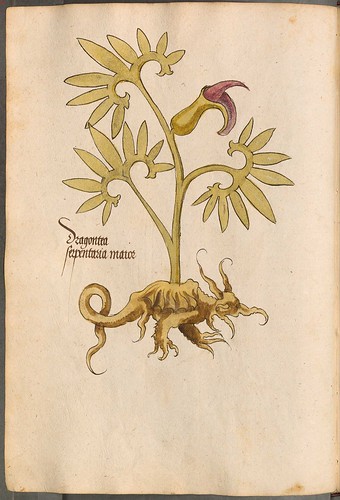

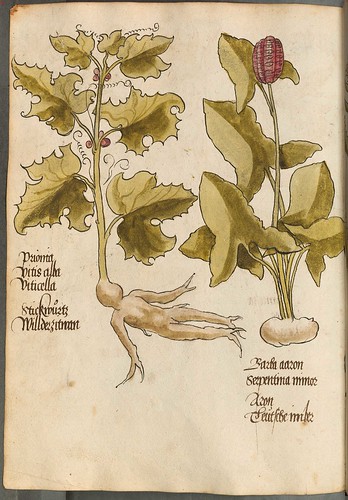
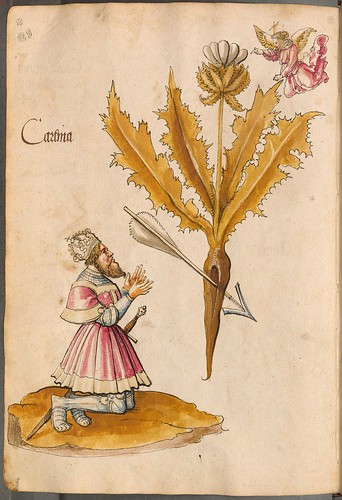

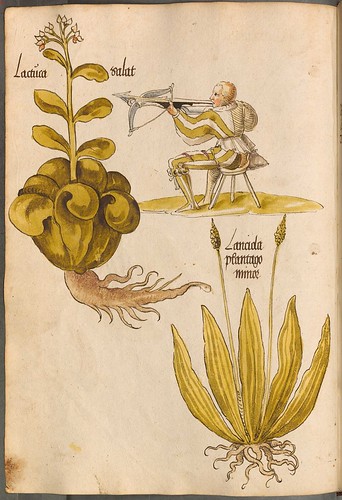
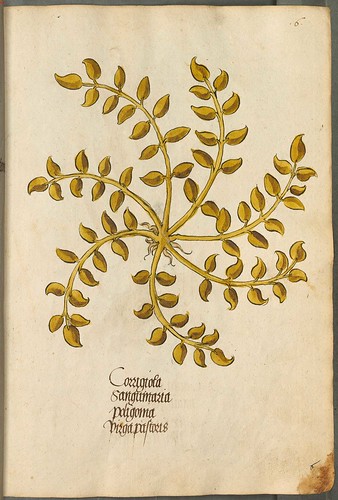

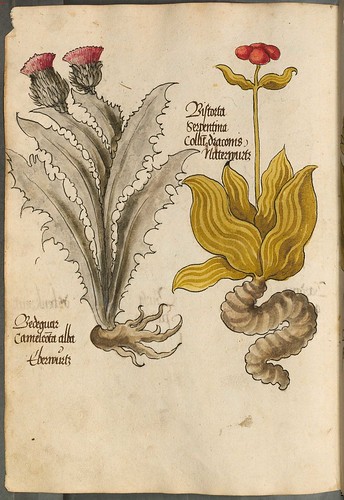
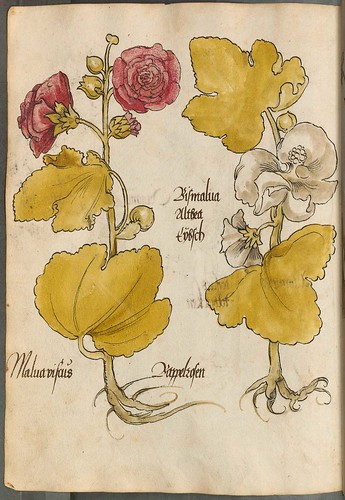

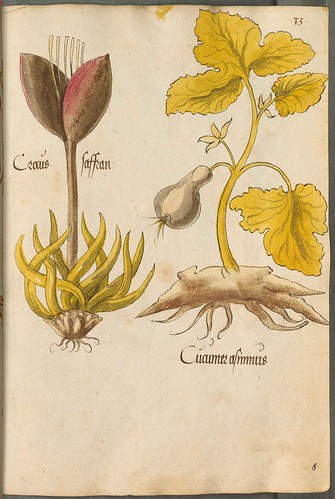

Produced in the 1520s in Augsburg, this manuscript features eccentric plant renderings and quite obviously belongs to the Medieval herbal tradition, despite any naive Renaissance attempts at taxonomic classification and segregation into chapters of related species. The hand-written text is variously in Latin, German and Italian and the manuscript is made out of paper.
To quote myself:
"Herbals are a particularly interesting group in the history of written communication in that they have always been in circulation since the antiquities and were not 'rediscovered' during the renaissance."The illustrations in 'Arzneipflanzenbuch' (Medicinal herb book) incorporate elements from folklore (the crossbow is from an age-old legend, for instance), witchcraft and alchemy (the traditional anthropomorphic Mandragora* - mandrake - and zoomorphic root forms) and the often stylised appearance of the plants suggest the manuscript artist may have been copying from earlier works.
'Arzneipflanzenbuch' [BSB Cod.icon. 26] is online at the Bavarian State Library and is about 150 pages long.
- Worth a squizz: one; two.
- Previously: The Pseudo-Apuleius Herbarium & The Tudor Pattern Book; although there are a few related works among the medieval/flora tag duo.

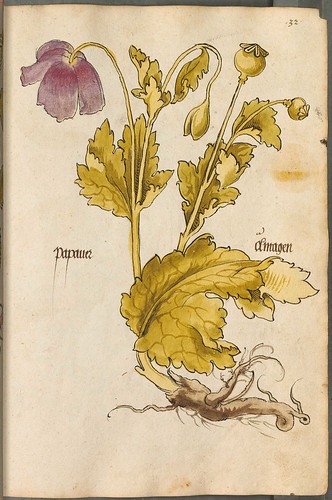



No comments:
Post a Comment